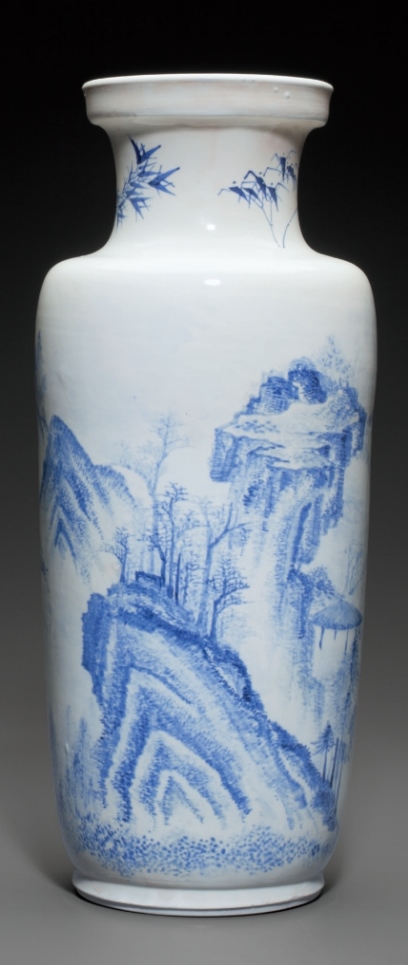Étiquettes
'Dragon and Tiger' jar, Blue-and-White, circa 1650-1660, Collection of Julia and John Curtis, Shunzhi period
A blue and white ‘Dragon and Tiger’ jar, Shunzhi period, circa 1650-1660. Estimate $7,000 – $9,000. Price Realized $11,250. Photo Christie’s Image Ltd 2015
The jar is of compressed ovoid form with short neck and is decorated on one side with an animated tiger crouching on a flat rock. The reverse is decorated with a bold five-clawed dragon pursuing a flaming pearl, amidst vaporous clouds and waves The jar is mounted with a pair of metal bail handles. 7 ¼ in. (18.2 cm.) high, wood cover – Lot 3551
Provenance: Spink & Son, Ltd., London, 1984.
Collection of Julia and John Curtis.
Notes: The combination of the long-tailed tiger and the scaly dragon emerging from clouds appears to have been a popular theme on a variety of porcelain shapes produced during the Transitional period. For an ovoid jar and cover with a dragon and similar tiger to the present example, see S. Marchant & Son, Exhibition of Chinese Blue and White – Wan Li to K’ang Hsi, 1980, no. 50. The two animals also appear, together with the kylin and phoenix, on a vase in the Walters Art Museum, Baltimore, illustrated by Michael Butler, Julia B. Curtis and Stephen Little in Shunzhi Porcelain: Treasures from an Unknown Reign, 1644-1661, Alexandria, VA, 2002, p. 99, no.7. Also see lot 3546 in this catalogue for a wucai beaker vase decorated with this theme and a discussion of its Daoist undertones.
CHRISTIE’S. AN ERA OF INSPIRATION: 17TH-CENTURY CHINESE PORCELAINS FROM THE COLLECTION OF JULIA AND JOHN CURTIS, 16 March 2015,New York, Rockefeller Plaza





















